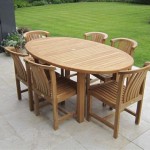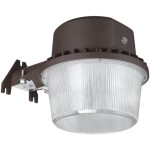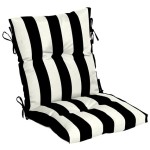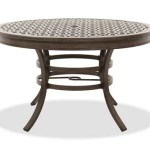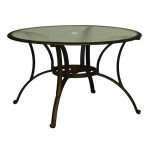Wood and Rope Outdoor Furniture: A Durable and Stylish Choice
Outdoor furniture plays a crucial role in transforming a garden, patio, or deck into an inviting and functional living space. Among the myriad of options available, wood and rope outdoor furniture stands out as a compelling choice due to its blend of durability, aesthetic appeal, and inherent connection to nature. This article explores the key aspects of wood and rope outdoor furniture, including its materials, construction, design considerations, maintenance, and suitability for various outdoor environments.
Materials: A Harmonious Union of Strength and Texture
The selection of materials is paramount in determining the longevity and visual characteristics of wood and rope outdoor furniture. The interplay between the solid, grounding presence of wood and the flexible, textural quality of rope creates a visually interesting and structurally sound piece of furniture.
Wood:
The choice of wood species significantly impacts the furniture's resistance to weathering, insect infestation, and rot. Common wood options include:*
Teak:
Renowned for its exceptional durability and natural oils, teak is highly resistant to moisture, decay, and insects. It weathers gracefully to a silver-gray patina, requiring minimal maintenance. However, teak is often a more expensive option.*
Acacia:
A hardwood with a rich, warm color and good resistance to the elements. Acacia is a sustainable and relatively affordable alternative to teak. Regular oiling can help maintain its color and prevent drying.*
Cedar:
Known for its aromatic scent and natural insect-repelling properties, cedar is a lightweight and moderately durable option. It is susceptible to scratches and dents and requires a sealant or stain to protect it from moisture damage.*
Eucalyptus:
A fast-growing and sustainable hardwood with a reddish-brown hue. Eucalyptus is relatively affordable and offers good weather resistance. Regular oiling is necessary to prevent drying and cracking.*
Pressure-Treated Pine:
A budget-friendly option treated with preservatives to resist rot and insect damage. Pressure-treated pine requires painting or staining to protect it from the elements and enhance its appearance.The wood used in outdoor furniture should be properly seasoned and dried to minimize warping, cracking, and splitting. Kiln-dried wood is generally preferred for its dimensional stability.
Rope:
The rope component contributes significantly to the furniture's aesthetic and structural integrity. Common rope options include:*
Synthetic Rope (Polypropylene, Olefin):
These synthetic ropes are highly resistant to water, mildew, and UV damage, making them ideal for outdoor use. They are available in a wide range of colors, thicknesses, and textures. Synthetic ropes are generally more affordable and require less maintenance than natural ropes.*
Natural Rope (Manila, Sisal):
Natural ropes offer a classic, rustic aesthetic but are less durable and weather-resistant than synthetic ropes. They are susceptible to rot, mildew, and UV degradation and require regular treatment with a sealant or protectant. Natural ropes can also be more prone to stretching and fraying.The rope's diameter and weave pattern influence its strength and visual appearance. Thicker ropes provide greater support and create a more substantial look, while intricate weaves add visual interest.
Construction: Durability Through Design and Assembly
The construction methods employed in creating wood and rope outdoor furniture are critical to its long-term durability and stability. Proper joinery, secure rope attachment, and thoughtful design considerations are essential for withstanding the rigors of outdoor use.
Wood Joinery:
Solid and reliable wood joinery techniques are essential for creating strong and stable furniture frames. Common joinery methods include:*
Mortise and Tenon:
A traditional joinery method that involves inserting a projecting tenon from one piece of wood into a precisely cut mortise in another. This creates a strong and durable joint.*
Dovetail:
A strong and visually appealing joinery method that interlocks two pieces of wood with dovetail-shaped projections and recesses.*
Lap Joint:
A simple joinery method that involves overlapping two pieces of wood and fastening them together with screws or adhesive.*
Butt Joint:
The simplest joinery method, involving butting two pieces of wood together and fastening them with screws or adhesive. This is the weakest joint and generally requires reinforcement.In addition to joinery, high-quality hardware, such as stainless steel screws and bolts, should be used to resist corrosion and maintain structural integrity.
Rope Attachment:
The method of attaching the rope to the wood frame is crucial for ensuring both structural integrity and aesthetic appeal. Common rope attachment methods include:*
Weaving:
The rope is woven through pre-drilled holes in the wood frame, creating a secure and visually appealing connection.*
Knotting:
The rope is tied directly to the wood frame using various knots, such as the square knot or the bowline. This method allows for easy adjustment and replacement of the rope.*
Clamping:
The rope is secured to the wood frame using metal clamps or fasteners. This method provides a strong and secure connection but may be less visually appealing.*
Grooves:
Rope is seated within a routed groove on the wooden frame. Glue and secured with fasteners.The rope should be tightly secured to prevent sagging and stretching over time. The ends of the rope should be properly finished to prevent fraying.
Design Considerations:
The overall design of the furniture should prioritize both comfort and functionality. Ergonomic considerations, such as seat height, back support, and armrest placement, are essential for ensuring a comfortable seating experience. The furniture should also be designed to withstand the specific environmental conditions of the outdoor space.Maintenance: Extending the Life of Your Furniture
Proper maintenance is essential for preserving the beauty and extending the lifespan of wood and rope outdoor furniture. Regular cleaning, protection from the elements, and prompt repairs can help prevent damage and maintain its appearance.
Cleaning:
Regular cleaning helps remove dirt, debris, and mildew that can accumulate on the furniture's surface. The cleaning frequency will depend on the environmental conditions and the frequency of use. A mild soap and water solution can be used to clean both the wood and the rope. A soft brush or sponge can be used to scrub away stubborn dirt and mildew. Avoid using harsh chemicals or abrasive cleaners, as these can damage the finish and the rope fibers.Protection:
Protecting the furniture from the elements can significantly extend its lifespan. When not in use, cover the furniture with a waterproof furniture cover to protect it from rain, snow, and sun. Store the furniture indoors during the off-season to prevent damage from harsh weather conditions. Apply a sealant or stain to the wood to protect it from moisture damage and UV degradation. Apply a protectant to the rope to prevent mildew and UV damage.Repairs:
Promptly repair any damage to the furniture, such as loose joints, frayed rope, or cracked wood. Tighten loose screws and bolts. Replace damaged rope or wood components. Refinish or repaint the wood as needed to maintain its appearance and protect it from the elements. Early maintenance extends furniture life.Oiling Wooden Furniture:
Regularly oiling wooden furniture can help maintain its color and prevent drying and cracking. Apply a suitable outdoor furniture oil according to the manufacturer's instructions. Teak oil, linseed oil, or tung oil are common choices. Oiling is especially important for hardwoods like teak, acacia, and eucalyptus.Specific Material Considerations:
Different materials require different maintenance approaches. Teak, for example, requires minimal maintenance and can be left to weather naturally. However, applying a teak sealer can help preserve its original color. Synthetic ropes are generally easy to clean and require minimal maintenance. Natural ropes, on the other hand, require more frequent cleaning and protection to prevent mildew and rot.By following these maintenance guidelines, wood and rope outdoor furniture can provide years of enjoyment and enhance the beauty of any outdoor space. The combination of durable materials, solid construction, and proper care ensures that this furniture remains a stylish and functional addition to the outdoor living environment.

Haven Way Bondi Aluminum Frame Woven Rope Outdoor Lounge Chair 89 Hw01bd The Home

4 Seater Acacia Wood And Rope Garden Sofa Set Beige

Halmuz 5 Piece Patio Furniture Set Solid Wood Woven Rope Balcony Modern Outdoor Lounge Chair With Sand Cushion 5wwr The Home

Pawleys Island Hammocks Outdoor Furniture Coastal Rope

Maze Martinique Rope Weave Corner Sofa Set With Lounge Armchair 2 Round Coffee Tables Living

4 Pieces Acacia Wood Patio Conversation Table And Chair Set With Hand Woven Rope Costway

4pcs Teak Outdoor Sofa Set Boho Yard Patio Furniture For 4 Person In Beige Brown Cushion Pillow Included Homary

Cabrillo Acacia Wood And Rope Outdoor Loveseat World Market

How 4 Seasons Outdoor S Rope Garden Furniture Is Made

Woven Rope Outdoor Furniture Set 4 Piece Brown Beige Charmydecor

